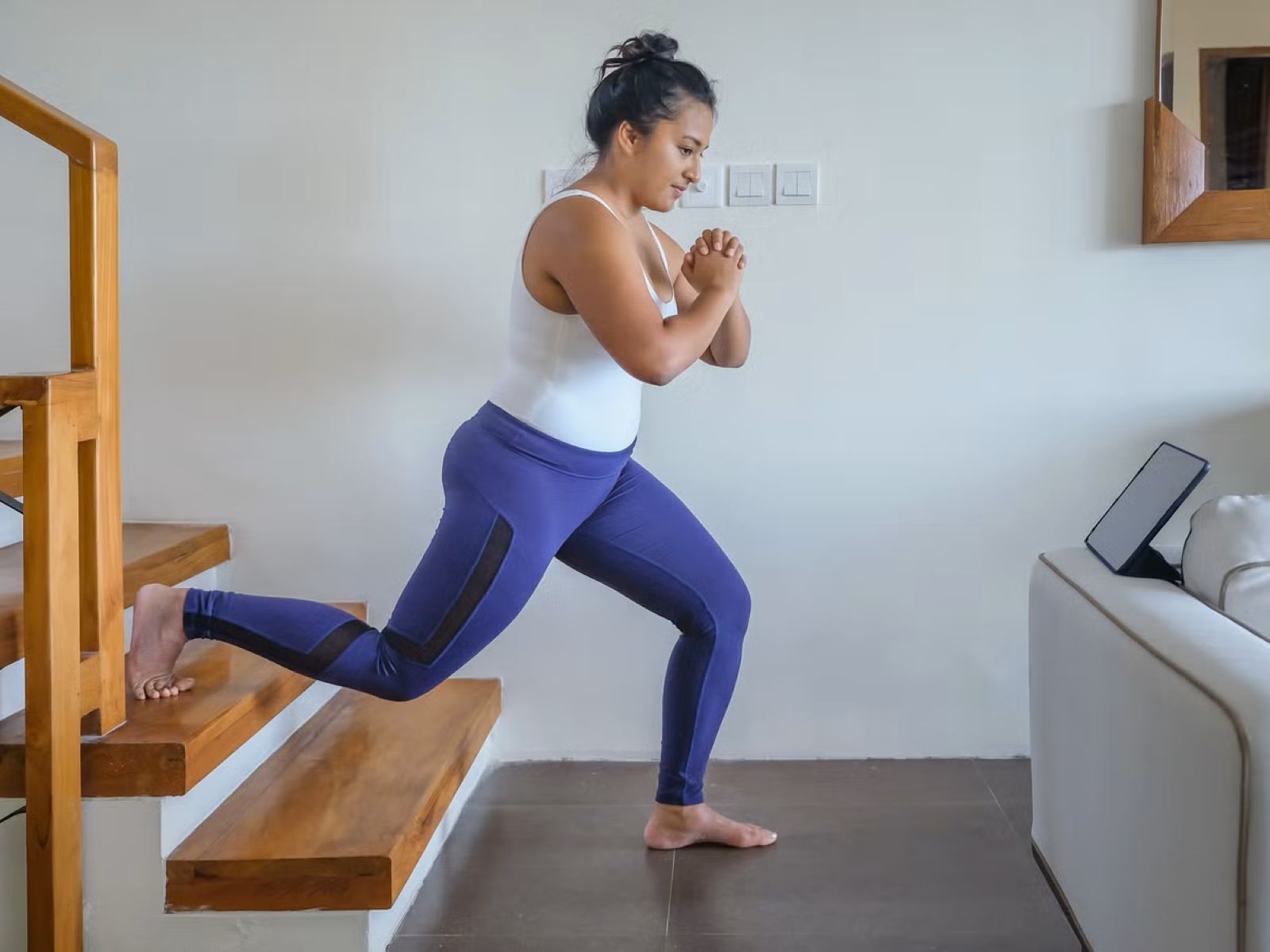

Featured
How To Have Motivation To Workout
Modified: August 19, 2023
Discover the best ways to stay motivated and committed to your workout routine with our featured tips and tricks. Achieve your fitness goals and maintain a healthy lifestyle.
Introduction
When it comes to staying motivated to workout, many of us struggle to find the drive and determination to get off the couch and hit the gym. It can be easy to make excuses or procrastinate, but prioritizing your health and fitness is crucial for overall well-being.
Having the motivation to workout doesn’t come naturally to everyone, but with the right strategies and mindset, you can develop a routine that keeps you consistently active. Whether your goal is to lose weight, build muscle, or simply improve your fitness level, finding the motivation to get started and stay committed is key.
In this article, we will explore various tips and techniques to help you find the motivation to workout and stick to a routine. From setting goals and creating a workout schedule to finding a routine you enjoy and staying accountable, we will cover all the essentials. Let’s dive in and discover how you can ignite that motivation and transform your fitness journey.
Setting Your Goals
When it comes to finding motivation to workout, setting clear and achievable goals is essential. Having a specific target in mind provides you with a sense of purpose and direction. Here are some tips for setting effective fitness goals:
- Be specific: Instead of setting a vague goal like “get in shape,” try to define what specifically you want to achieve. For example, you could aim to run a 5K race or have visible abs.
- Make them realistic: Setting unrealistic goals can lead to frustration and disappointment. Consider your current fitness level, time commitment, and any limitations you may have. Set goals that are challenging yet attainable.
- Set both short-term and long-term goals: Short-term goals help keep you motivated in the present, while long-term goals provide a bigger picture to strive for. Break down your long-term goals into smaller milestones that you can achieve along the way.
- Write them down: Putting your goals in writing makes them more tangible and increases your commitment. Keep a fitness journal or use an app to track your progress and celebrate milestones.
- Make them measurable: Setting specific metrics to track your progress helps you stay on track. For example, if your goal is to increase strength, you could aim to lift a certain weight or complete a certain number of repetitions.
- Set a deadline: Having a deadline creates a sense of urgency and holds you accountable. It’s important to set a realistic timeline that allows for gradual progress and avoids burnout.
By setting clear and realistic goals, you can give your fitness journey a clear direction. Having achievable milestones along the way will provide you with the motivation to keep going, measure your progress, and celebrate your successes.
Creating a Workout Schedule
One of the most effective ways to stay motivated and committed to your workouts is by creating a structured workout schedule. Having a well-organized plan helps you prioritize your workouts and ensures that you make time for them. Here are some steps to help you create a workout schedule:
- Evaluate your availability: Determine how many days a week you can realistically commit to working out. Consider your work schedule, family responsibilities, and other commitments. It’s important to be realistic and choose a number of days that you can consistently dedicate to exercise.
- Choose the right time: Select a time of day that works best for you. Some people prefer early morning workouts to start their day energized, while others find it more fitting to exercise during lunch breaks or in the evenings. Find a time that aligns with your daily routine and energy levels.
- Select the types of workouts: Decide which types of exercises or activities you want to incorporate into your routine. This could include cardio workouts, strength training, yoga, or any other form of exercise that you enjoy. Aim for a well-rounded routine that targets different muscle groups.
- Create a balanced schedule: Distribute your workouts evenly throughout the week to give your body enough time to rest and recover. Avoid consecutive days of intense workouts to prevent overexertion and reduce the risk of injury.
- Be flexible: Life is unpredictable, and there may be times when you need to adjust your schedule. Embrace flexibility and be willing to adapt when unexpected events arise. It’s better to reschedule a workout than to skip it entirely.
- Track your progress: Use a calendar, fitness app, or journal to track your workouts and mark off the days you successfully complete. This visual representation of your commitment can be motivating and help you stay on track.
By creating a workout schedule that fits into your lifestyle and allows for consistency, you are more likely to stick to your routine and achieve your fitness goals. Remember, consistency is key when it comes to progress and maintaining motivation.
Finding a Workout Routine You Enjoy
When it comes to staying motivated to workout, enjoying the activities you do is crucial. Finding a workout routine that you genuinely enjoy will make it easier to stay consistent and look forward to each session. Here are some tips on how to find a workout routine that suits your interests and preferences:
- Explore different options: Try out different types of workouts and exercise classes to discover what you enjoy the most. This could include activities like running, cycling, dance classes, martial arts, or team sports. Experimenting will help you find something that resonates with you.
- Consider your preferences: Reflect on your personality and what motivates you. Do you prefer solitary activities or being part of a group? Are you more inclined towards high-intensity workouts or prefer a slower pace? Consider your preferences and choose activities that align with them.
- Think outside the gym: Not all workouts have to take place in a traditional gym setting. Look for outdoor activities like hiking, swimming, or paddleboarding. Engaging in activities in nature can provide a refreshing change of scenery and add excitement to your routine.
- Mix it up: Don’t be afraid to try new things and switch up your routine. Incorporating variety not only prevents monotony but also challenges your body in different ways. Consider cross-training by combining different activities throughout the week.
- Find a workout buddy: Exercising with a friend or joining a group class can make your workouts more enjoyable and provide social support. Having someone to share the experience with can make the time fly by and keep you motivated.
- Listen to your body: Pay attention to how different activities make you feel. Find workouts that leave you feeling energized, accomplished, and satisfied. Your body will naturally gravitate towards activities that it enjoys and finds beneficial.
Remember, the key to long-term motivation is finding activities that you genuinely enjoy. Don’t be afraid to try new things and be open-minded in your pursuit of a workout routine that brings you joy and fulfillment. When you enjoy what you do, staying consistently motivated becomes much easier.
Staying Accountable
Accountability is a powerful tool when it comes to staying motivated and committed to your workout routine. It helps you stay on track, overcome obstacles, and push through challenges. Here are some strategies to help you stay accountable in your fitness journey:
- Find an accountability partner: Partnering up with someone who shares similar fitness goals can provide you with the support and motivation you need. You can hold each other accountable for showing up to workouts, tracking progress, and staying consistent.
- Join a community or fitness group: Engaging in a community of like-minded individuals can help create a sense of camaraderie and support. Whether it’s a local running group, an online fitness forum, or a social media fitness community, surrounding yourself with people who share your passion can help you stay motivated.
- Set up regular check-ins: Establish regular check-in points with your accountability partner or group. This could be weekly or monthly meetings to discuss progress, challenges, and goals. Sharing your successes and discussing any hurdles can provide valuable insights and encouragement.
- Use technology and apps: There are numerous fitness apps and tracking tools available that can keep you accountable. These apps can help you track your workouts, monitor progress, and send reminders to stay on track.
- Reward yourself for milestones: Incentives can be a powerful motivator. Set up achievable milestones and reward yourself when you achieve them. It could be treating yourself to a massage, buying new workout gear, or pampering yourself in some other way that brings you joy.
- Track your progress: Keep a record of your workouts, measurements, and achievements. This will serve as a visual reminder of your progress and keep you motivated to continue pushing forward.
- Set reminders and alarms: Use reminders and alarms on your phone or calendar to keep you on track. Set alerts for your workout times and stick to them as much as possible. Seeing these reminders will help you stay focused and committed.
By implementing these accountability strategies, you will increase your chances of staying motivated and committed to your workout routine. It’s important to remember that accountability is not about perfection but about progress. Celebrate the small victories along the way and use any setbacks as learning opportunities to keep moving forward.
Visualizing Your Progress
When it comes to staying motivated in your fitness journey, visualizing your progress can be a powerful tool. Seeing tangible evidence of the physical and mental transformations you’re experiencing can boost motivation and reinforce your commitment. Here are some ways you can visualize your progress:
- Take progress photos: Regularly taking photos of yourself can be a great way to track your physical changes over time. Take photos from different angles and compare them periodically. Seeing your body transform can be incredibly motivating and provide a visual reminder of your hard work paying off.
- Measurements and body composition: Use a measuring tape to track changes in your body measurements. Keep a record of your waist, hips, thighs, and other key areas. Additionally, consider getting a body composition analysis done to monitor changes in your body fat percentage, muscle mass, and overall body composition.
- Keep a workout journal: Write down your workouts, including the exercises, sets, and reps you perform. Also, record any improvements or milestones you achieve, such as lifting heavier weights or running longer distances. Having a written record of your progress can boost your motivation and give you a sense of accomplishment.
- Use fitness apps and trackers: Many fitness apps and trackers provide visual representations of your progress. You can see graphs and charts displaying your workout frequency, distance covered, calories burned, and other metrics. Seeing these visual representations can motivate you to keep pushing and improving.
- Set performance-based goals: Instead of solely focusing on your appearance, set goals that are performance-based. This could be running a certain distance in a specific time or being able to lift a heavier weight. Seeing your performance improve over time is a tangible way to measure progress and boost motivation.
- Celebrate milestones: Take the time to celebrate each milestone you achieve along the way. Treat yourself for reaching a certain weight loss goal, completing a challenging workout, or sticking to your routine consistently for a month. Celebrating your accomplishments will reinforce the positive feelings associated with your progress.
By visualizing your progress, you are reinforcing the positive changes happening within your body and mind. It serves as a constant reminder of the progress you have made so far and can give you the motivation to keep pushing harder towards your ultimate fitness goals.
Surrounding Yourself with Motivation
Creating an environment that fosters motivation is essential for maintaining a consistent workout routine. Surrounding yourself with inspiration and positive influences can help you stay focused, motivated, and committed to your fitness goals. Here are some ways to surround yourself with motivation:
- Find a workout buddy: Exercising with a friend or joining a group class can provide you with the support and motivation you need. Having someone to share the experience with can make workouts more enjoyable and hold you accountable.
- Join fitness communities: Engaging with others who share similar fitness goals can be highly motivating. Join online forums, social media groups, or local fitness communities to connect with like-minded individuals. Share your progress, seek advice, and celebrate achievements together.
- Fuel your mind with inspiration: Read books, articles, and blogs about fitness, health, and personal growth. Surrounding yourself with inspiring stories and knowledge will fuel your motivation. Follow fitness influencers on social media who share valuable tips and positive messages.
- Create a motivating workout space: Set up a dedicated workout space at home or find a gym or fitness studio that inspires you. Decorate it with motivating quotes, fitness equipment you enjoy using, or visuals that represent your fitness goals. Make the environment inviting and conducive to exercise.
- Use music to boost motivation: Create a playlist of energizing and motivating songs that get you pumped up during your workouts. Music has a powerful effect on mood and can help you push through challenging workouts.
- Set reminders and affirmations: Place reminders and motivational quotes in strategic places where you will see them frequently. Write down powerful affirmations that inspire and empower you. Seeing these positive messages regularly will reinforce your motivation.
- Follow fitness challenges: Participating in fitness challenges can provide an extra boost of motivation and a sense of competition. Look for online fitness challenges, sign up for local events or create your own challenge with friends or colleagues.
- Practice self-care: Taking care of your overall well-being is essential for maintaining motivation. Get enough sleep, eat nutritious food, and prioritize rest and recovery. When your mind and body are taken care of, you’ll have more energy and motivation to dedicate to your workouts.
By surrounding yourself with motivation, you are creating an environment that promotes consistent effort and dedication to your fitness journey. Keep in mind that motivation can fluctuate, so it’s essential to have a support system and strategies in place to help you stay inspired even during challenging times.
Overcoming Setbacks and Plateaus
Setbacks and plateaus are common in any fitness journey, and they can be demotivating. However, it’s important to remember that they are a normal part of the process and can be overcome with perseverance and the right mindset. Here are some strategies to help you overcome setbacks and plateaus:
- Reframe your mindset: Instead of viewing setbacks and plateaus as failures, see them as opportunities for growth and learning. Embrace the challenges as a chance to reassess your goals, adjust your approach, and come back stronger.
- Identify the root cause: Take some time to analyze the reasons behind the setback or plateau. It could be due to a lack of consistency, overtraining, poor nutrition, or external factors. Understanding the cause will help you address it effectively.
- Make adjustments: Based on the identified cause, make the necessary adjustments to your workout routine, nutrition plan, or other areas. This could mean changing up your exercises, seeking guidance from a trainer or nutritionist, or modifying your goals to be more realistic.
- Break it down: Rather than getting overwhelmed by the setback or plateau, break it down into smaller, manageable steps. Focus on making small improvements each day and celebrating each milestone along the way.
- Try something new: Break through a plateau by trying a new workout routine, incorporating different exercises, or exploring a new fitness activity. Novelty can challenge your body in new ways and reignite your motivation.
- Seek support: Reach out to your workout buddy, a supportive friend, or a fitness community when you’re facing a setback or plateau. Sharing your challenges can provide new perspectives, advice, and encouragement to keep going.
- Track your progress: Review your fitness journal, workout logs, or any other progress tracking tool to remind yourself of how far you’ve come. Reflecting on your past achievements can provide the motivation and confidence needed to overcome the current obstacle.
- Practice patience: Understand that progress takes time. Plateaus and setbacks can be frustrating, but stay patient and trust the process. Keep putting in the effort, and eventually, you will break through and see results.
Remember, setbacks and plateaus are not permanent. They are temporary roadblocks that can be overcome with resilience, adaptability, and a positive mindset. Stay persistent, persevere through the challenges, and you will come out stronger on the other side.
Rewarding Yourself
As you progress on your fitness journey, it’s important to celebrate your hard work and accomplishments along the way. Rewarding yourself for reaching milestones and sticking to your routine can provide that extra boost of motivation to keep going. Here are some ways to reward yourself:
- Plan non-food rewards: Instead of using food as a reward, consider other ways to treat yourself. Buy yourself new workout gear, pamper yourself with a massage or spa day, or indulge in a new book or gadget that brings you joy.
- Schedule rest and recovery days: Rest and recovery are vital for progress and overall well-being. Give yourself permission to take a day off and relax without feeling guilty. This time to recharge is a reward in itself.
- Have a cheat meal: Incorporating a cheat meal into your nutrition plan can be a rewarding and enjoyable way to indulge in your favorite foods. Plan for it in advance, and savor the experience guilt-free without derailing your progress.
- Track and celebrate milestones: Set specific milestones along your fitness journey, such as completing a certain number of workouts or achieving a target weight or body fat percentage. When you reach these milestones, celebrate them in a meaningful way.
- Treat yourself to a fitness-related purchase: If there’s a piece of fitness equipment or a class you’ve been eyeing, consider rewarding yourself with it as you achieve your goals. This can serve as both a reward and an investment in your continued fitness journey.
- Take progress photos: Use progress photos not only to track your transformation but also to appreciate how far you’ve come. Compare your current photos with your starting point to see the progress you’ve made. Seeing visible results can be a rewarding experience.
- Plan a fitness-related outing or experience: Treat yourself to a fitness-related outing or experience as a reward for your dedication. This could be hiking in a beautiful location, taking a challenging workout class, or participating in a fun run or obstacle course.
- Share your achievements: Share your milestones and achievements with your support system, such as friends, family, or an online community. Their congratulations and recognition can be a rewarding experience and provide encouragement to keep pushing forward.
Remember, rewards are personal and should align with your preferences and values. Choose rewards that genuinely make you happy and motivate you to continue your fitness journey. Use rewards as a way to celebrate your progress and acknowledge the hard work you’ve put in.
Maintaining Long-Term Motivation
Maintaining long-term motivation is essential to sustain a consistent and successful fitness journey. While initial enthusiasm can drive you to start, it’s the long-term commitment that will help you achieve lasting results. Here are some strategies to maintain motivation for the long haul:
- Set realistic expectations: Understand that fitness progress takes time and effort. Avoid setting unrealistic goals or expecting instant results. Embrace the process and focus on gradual improvements rather than quick fixes.
- Revisit your why: Reflect on the deeper reasons behind your fitness journey. Identify the motivations and values that drive you to improve your health and fitness. Keep these in mind whenever motivation wavers.
- Break it down into smaller goals: Instead of solely focusing on the end result, break your journey into smaller, achievable goals. Celebrate each milestone and use them as stepping stones to keep progressing.
- Find joy in the process: Shift your focus from solely outcome-based goals to enjoying the process of becoming fitter and healthier. Find activities and workouts that bring you joy and make exercise something you look forward to.
- Practice self-compassion: Be kind to yourself during setbacks or periods of low motivation. Acknowledge that everyone experiences ups and downs, and remember that progress is not always linear. Be forgiving and gentle with yourself.
- Keep learning and trying new things: Continuously educate yourself about fitness, health, and wellness. Read books, follow trusted fitness resources, and experiment with new workouts or nutrition strategies. Curiosity and growth can keep motivation alive.
- Seek support and accountability: Surround yourself with a supportive community of like-minded individuals who can offer encouragement, advice, and accountability. Share your goals and progress with them, and lean on them during challenging times.
- Give yourself rest and recovery: Avoid overtraining and burnout by prioritizing rest and recovery. Listen to your body and take rest days when needed. Taking care of your overall well-being is crucial for sustaining long-term motivation.
- Celebrate non-scale victories: Remember that progress goes beyond just the numbers on the scale. Celebrate non-scale victories, such as improved stamina, increased strength, better sleep quality, or improved mood. These achievements can be just as meaningful as changes in weight or body composition.
- Stay flexible and adaptable: Embrace flexibility and adaptability in your fitness journey. Life can throw curveballs, and circumstances may change. Be open to adjusting your routine, goals, or strategies as needed to maintain motivation and progress.
Maintaining long-term motivation requires a mindset shift and a commitment to ongoing growth and self-care. Embrace the journey, stay dedicated, and remember that achieving long-lasting results is a continuous process rather than a quick fix.
Conclusion
Staying motivated to workout and maintaining a consistent fitness routine can be challenging, but with the right strategies and mindset, it is absolutely achievable. By setting clear goals, creating a workout schedule, finding activities you enjoy, and staying accountable, you can overcome obstacles and stay motivated on your fitness journey.
Remember to visualize your progress, surround yourself with motivation, and reward yourself for your hard work. Stay committed even during setbacks and plateaus, and maintain a long-term perspective to sustain your motivation over time.
Your fitness journey is unique to you, and it’s important to find what works best for your lifestyle and preferences. Embrace the process of self-discovery and growth, and don’t hesitate to seek support and guidance when needed.
By incorporating these strategies into your fitness routine, you can cultivate the motivation necessary to achieve your goals, improve your health, and enhance your overall well-being.








